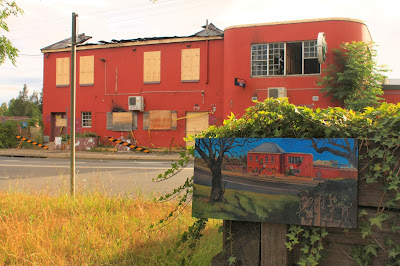I've been invited to exhibit a selection of 15 of my Pyrmont paintings in the members' lounge of the Australian National Maritime Museum.
This exhibition will still be on display throughout the annual Pyrmont festival in May, which culminates in a 2 day celebration of Art, Wine and Food in Pirrama Park, on the weekend of Saturday 17th and Sunday 18th May 2014.

My exhibition of Pyrmont paintings
in the members lounge of the
Australian National Maritime Museum
 |
| My exhibition of Pyrmont paintings in the members lounge of the Australian National Maritime Museum Enquiries about these paintings |
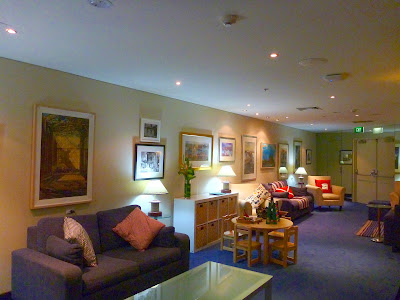 |
| My exhibition of Pyrmont paintings in the members lounge of the Australian National Maritime Museum Enquiries about these paintings |
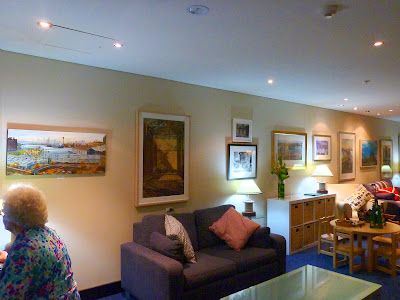
My exhibition of Pyrmont paintings in the
members lounge of the
Australian National Maritime Museum
This is a view of the exhibition from the most comfy sofa in the middle of the members lounge.

My exhibition of Pyrmont paintings
in the members lounge of the
Australian National Maritime Museum
 |
| My exhibition of Pyrmont paintings in the members lounge of the Australian National Maritime Museum |
This quick sketch of the rooftops of the CSR Refinery and the Glebe Island swing bridge is hung behind the reception desk.
I drew this from the top of the CSR Boilerhouse several years before the Anzac Bridge was built.
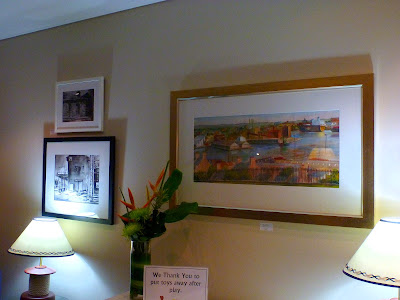
P97B "Tumbledown cottage, 95 Pyrmont st (now demolished)"
1994 ink/paper 22 x 30 cm
P31 "Jones Bay Wharf, 1" 1997 ink/paper 30.5 x 40.5 cm
O21 "Pyrmont, looking west from Observatory Hill"
1989 gouache/paper 34 x 75 cm
Enquiries about these paintings

HCT13 "The 'Southern Cross' from the Harbour Control Tower 2007
gouache/paper 30 x 50 cm
Enquiries about these paintings
This is the most recent image of Pyrmont in this exhibition, although by now the wharf in the foreground has been completely demolished to make way for the controversial Barangaroo development.
My studio in the control room of the Harbour Tower gave me a 360 degree birds eye view of Sydney Harbour, so this is a very unfamiliar aspect of the Pyrmont peninsula.

P120 "Jones Bay Wharf" 2000 pastel/paper 76 x 56 cm
P90 "CSR Sunset" 1998 oil/canvas 61 x 91 cm
P91 "CSR Refinery" 1994 acrylic/paper 76 x 56 cm
Enquiries about these paintings

P90 "CSR Sunset" 1998 oil/canvas 61 x 91 cm
P91 "CSR Refinery" 1994 acrylic/paper 76 x 56 cm
Enquiries about these paintings
Two views of the CSR Refinery, which is now the Jackson's Landing development.

P80 "Pyrmont Power Station from Mill St 1"
1991 mixed media/paper 76 x 56 cm
P35 "Pyrmont Bond Stores
(‘Darling Island Bond and Free’ 12 Pyrmont st)"
1996 ink/paper 30.5 x 40.5 cm
Enquiries about these paintings
Two evocative ink and wash drawings are hung at the end corner of the room.
The glitzy Star Casino has now replaced the brooding ruins of the Pyrmont Power Station.
However, in contrast the bond store at no. 12 Pyrmont street, known as "Darling Island Bond and Free" has changed so little that I can't believe that nearly 2 decades has passed since I drew this moody ink and wash sketch.

P90 "CSR Sunset" 1998 oil/canvas 61 x 91 cm
P91 "CSR Refinery" 1994 acrylic/paper 76 x 56 cm
Enquiries about these paintings

HCT13 "The 'Southern Cross' from the Harbour Control Tower "
2007 gouache/paper 30 x 50 cm
P120 "Jones Bay Wharf" 2000 pastel/paper 76 x 56 cm
Enquiries about these paintings

P36 "Ways Terrace from Lower Jones Bay Road"
1993 ink/paper 31 x 41 cm
Enquiries about these paintings

P103 "From the roof of Pyrmont Power Station
1994 oil/canvas 92 x 122 cm
P214 "Sydney Harbour from the top of the
Pyrmont Power Station(building Star Casino)"
1997 oil/board 40 x 89 cm
Enquiries about these paintings
The red ship in the background is the notorious ‘Tampa’, painted several years before the refugee incident.

P97B "Tumbledown cottage, 95 Pyrmont st (now demolished)"
1994 ink/paper 22 x 30 cm
P31 "Jones Bay Wharf, 1" 1997 ink/paper 30.5 x 40.5 cm
Enquiries about these paintings

P92 "Industrial Cathedral 2" (‘Cooperage’, CSR Refinery)
1998 oil/canvas 92 x 61 cm
P97B "Tumbledown cottage, 95 Pyrmont st
(now demolished)" 1994 ink/paper 22 x 30 cm
P31 "Jones Bay Wharf, 1" 1997 ink/paper 30.5 x 40.5 cm
Enquiries about these paintings
An added bonus is that the Australian National Maritime Museum is very close to the sites where most of my paintings were created, so the viewers only have to step outside for a moment to grasp how much the landscape of the inner city suburb of Pyrmont has changed over the last 30 years.
Glimpses of Pyrmont's half forgotten industrial past can still be discerned through the manicured lawns and towers of high rise, but only if you know exactly what to look for.
Related posts




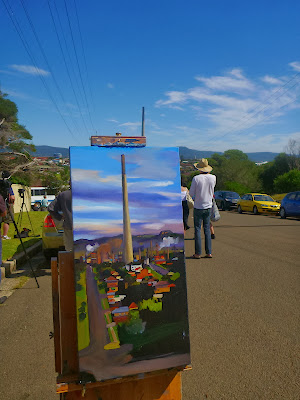
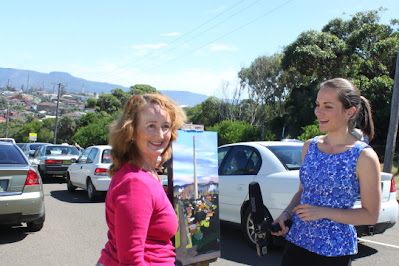








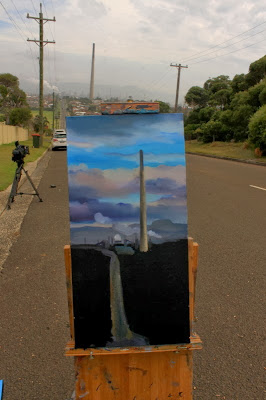



+2013+oil+on+canvas+25+x+31cm.jpg)













